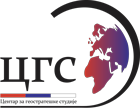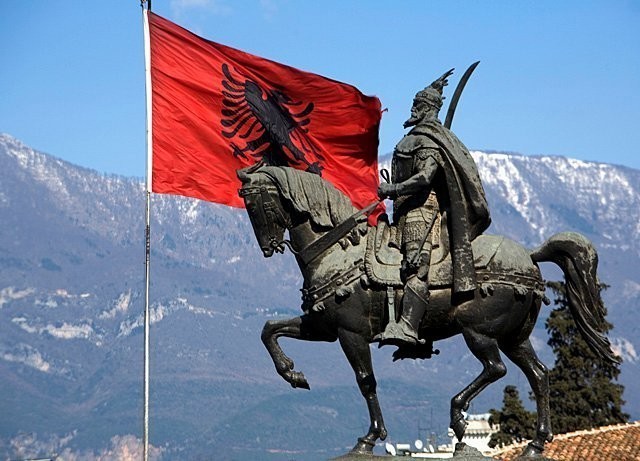National Movement of Serbs from Kosovo and Metohija "Fatherland"
The petition of Albanian nationalists to change the name of the self-proclaimed Republic Of Kosovo to Dardani reflects the long-standing efforts of the Albanian quasi-science to tie the origin of Albanians to the old peoples in order to show that they are the oldest inhabitants in the Balkans, which then gives them the right not to be immigrants but an indigenous people and that a good part of this is the fact that the Albanian minority is not a part of the ethnic group.the Balkan area.
These efforts go back to the seventies of the last century in a fierce national euphoria where it went to show that Albanians are God's chosen people. Let us remember only the examination of blood groups by falsifying scientific results, all with the desire to show that Albanians in the territory of Kosovo and Metohija are a primordial people. Therefore, since the Illyrian Dardani tribe lived in the area of today's southern Serbian province in Roman times, the quasi-scientific public in Pristina is trying to tie themselves to this tribe. And not only for this tribe, but also for the fact that they are descendants of Ilir. In this National Romanticism quite often there is the name Illyrian among Albanians, and there are numerous names of Illyrian Kings and princesses such as Agron and Teuta. The name of the Illyrian King of Serbia is absent from the Albanians probably because it resembles Serbs.
Historically, there is no evidence that Albanians are descendants of Illyrians. There is no evidence of ordinary, linguistic or any other. As an ethnic group they first appear from the area of the Rabban plateau, therefore it is quite common term for this ethnic group Arbanas. From this plateau they spread both North and South.
In recent times, archaeogenetic research into the DNA structure of the peoples who lived in the Balkans has dominated in this region the DNA of haplo group i2a. this haplo group is dominant in Serbs in 42%, in Croats 45%, Bosniaks go up to 50%. This group is called Illyrian or Dinaric. Its presence on the soil of Europe as a group I is more than 25 thousand years old. Some 3 thousand years BC people with this haplo group due to the arrival of aggressive immigrants from Eastern Europe and Siberia experienced a real massacre known as the "period of shattered skulls". Part of this people is preserved in the Balkans in the inaccessible Balkan Mountains as well as in Scandinavia. These in Scandinavia have haplo group i1 and these in the Balkans I2. Even when the skull from Lepenski Vir was found, it was noted that the DNA was not very different from the inhabitants of this area today. Nations came and passed, languages changed, but the autonomy of this area remained essentially unchanged.
For the creation of the Albanian nation to its fullest extent, the Austro-Hungarian monarchy is primarily due, all with the aim of undermining the influence of Serbs in the Balkans as much as possible. Bulgarian historian Teodora Toleva best described this in her book entitled The Influence of the Austro-Hungarian Empire on the creation of the Albanian nation.
In this fabrication of quasi-scientific results, distortion of history, neglect of arguments and facts, a typical example is the so-called. Skanderbeg then Đurađ Kastriotić. There is no place in the area of Kosovo and Albania where there was no monument to Skanderbeg as a great Albanian and almost every settlement had a street with his name. However, the latest historical facts say something completely different. The latter even began to be acknowledged by Albanian historians, and therefore the exaltation of this hero from the time of the Turkish conquest of the Balkans was silenced. The facts are harsh and true. Father Ivan and brother Reposh were buried in the cult Monastery of Hilandar, where their tombstones still exist today. All correspondence of Đurađ Kastriotić-Branilović was conducted in old Slavic language, as evidenced by the Dubrovnik archives. In his court he spoke only Serbian. And of his nine children, five are Slavic and only four are Christian names. His main military leader was Duke Peter Golemi. When he died, he was buried in the Orthodox Church of St. Nicholas in Lesh. When the Turks conquered this city, they dug up the tomb and scattered its bones for the dogs to starve. Because of his resistance, he was so angry with the Turks. Descendants of this family through many centuries were present in Italy and Spain under the name Branilo.
What is Strange and unusual is the official silence of Serbian historiography on this Albanian attempt to falsify and appropriate Serbian history. To this day, Serbian children in schools learn that Skanderbeg is a great Albanian hero and that Albanians are descendants of Ilir without a single, single concrete proof. This only goes to the benefit of the Albanian or rather the Albanian expansion on the territory of the Balkans and to the detriment of the Serbian people and their primordial area. Serbian historiography stuck within the Vienna-Berlin theory on the arrival of Slavs in the Balkans avoids essentially penetrating into the history of the Balkan area. It is indicative that in the genetic structure of Serbs so-called. the Russian or Slavic R1a gene is present in the percentage of 15 to 17%. It is not unknown in history that the peoples who conquered the areas there imposed their language. This was done by the Slavs in the Balkans and by the Turks in Anatolia. After all, with the arrival of the Romans, one part of the population was Romanized and the one that is not assumed accepted the Slavic-Serbian language.
The national movement of Serbs from Kosovo and Metohija "Fatherland" expects that the Serbian scientific thought will be much more and more deeply devoted to this issue in the future and that it will not interpret history in a way that is harmful to the interests of the Serbian people, nor in a way that favours the Serbian people. The national movement of Serbs from Kosovo and Metohija "Fatherland" expects to do it in a true and valid way because it is the truth that will eventually come to light and win.
Photo: monument to Skanderbeg in Albania
30. December 2024.

